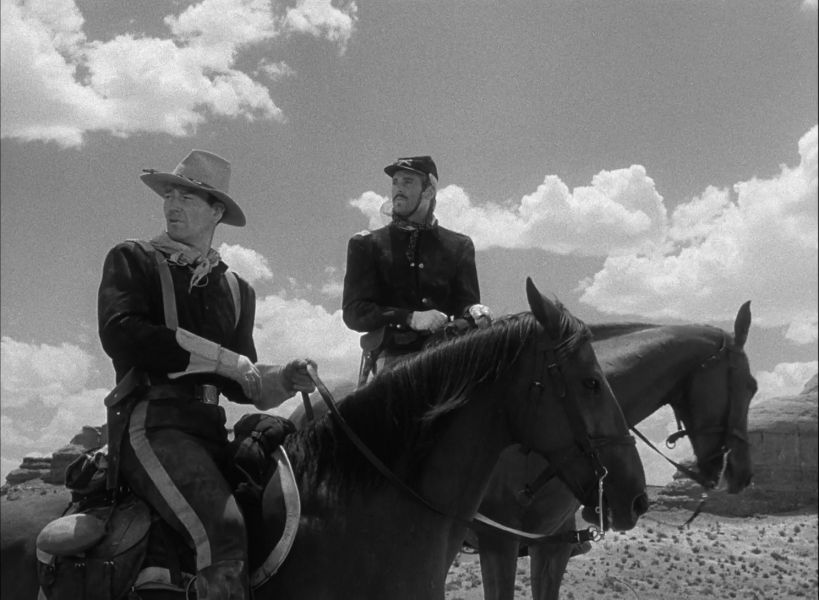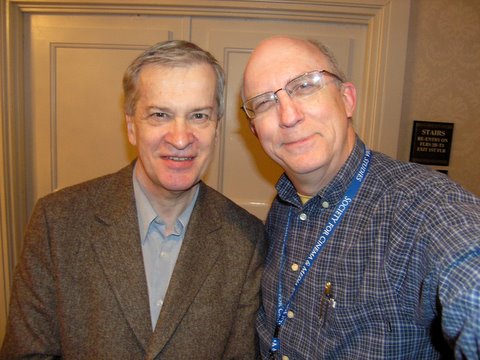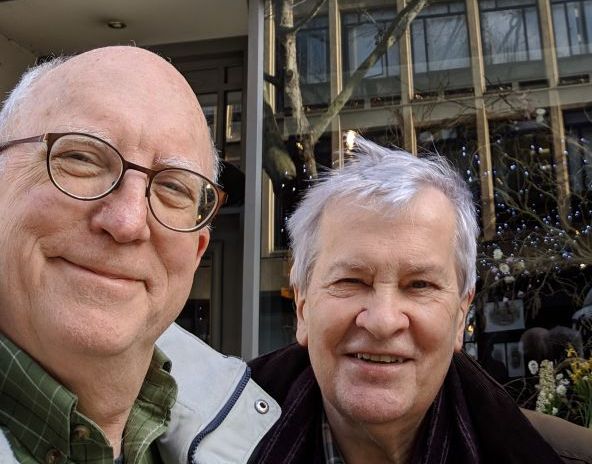Difference between revisions of "Concept of Star (Discussion)"
From Screenpedia
Jump to navigationJump to search (Undo revision 3569 by Jeremy Butler (talk)) Tag: Undo |
|||
| (32 intermediate revisions by 2 users not shown) | |||
| Line 1: | Line 1: | ||
| − | == | + | ==Dyer on the star image== |
| − | + | #Star image: a "structured polysemy" (p. 63) constructed from "media texts": | |
| − | #''' | + | ##Promotion |
| + | ##Publicity | ||
| + | ##Film roles | ||
| + | ##Criticism/commentary on those roles | ||
| + | #'''All Groups:''' Dyer argues, "The star image is used in the construction of a character in a film in three ways" (127), which are listed below. Pick one current movie star and one film. How is his/her star image used in the construction of that character? Explain. | ||
#*Selective use | #*Selective use | ||
#*Perfect fit | #*Perfect fit | ||
#*Problematic fit | #*Problematic fit | ||
| − | # | + | #Explain what Dyer's signs of ''character'' are (106+): |
| − | #''' | + | #*'''Groups 3 and 4:''' |
| − | |||
#*#Audience foreknowledge | #*#Audience foreknowledge | ||
#*#Name | #*#Name | ||
#*#Appearance | #*#Appearance | ||
| + | #*'''Groups 5 and 1:''' | ||
#*#Objective correlatives | #*#Objective correlatives | ||
#*#Speech of character | #*#Speech of character | ||
#*#Speech of others | #*#Speech of others | ||
| + | #*'''Groups 2 and 6:''' | ||
#*#Gesture | #*#Gesture | ||
#*#Action | #*#Action | ||
#*#Structure | #*#Structure | ||
#*#''mise-en-scene'' | #*#''mise-en-scene'' | ||
| − | #* | + | #*Apply Dyer's 10 signs of character to one of the characters from ''Petrified Forest''. That is, use ''one'' of the main characters (see below) and then discuss how the signs of character are used to build that character. |
| − | + | #**'''Groups 3 and 4:''' Duke Mantee (Humphrey Bogart) | |
| − | + | #**'''Groups 5 and 1:''' Gabrielle Maple (Bette Davis) | |
| − | + | #**'''Groups 2 and 6:''' Alan Squier (Leslie Howard) | |
| − | + | #Dyer's signs of ''performance'' are (134): | |
| − | + | ##'''Group 3:''' Facial expression | |
| − | + | ##'''Group 4:''' Voice | |
| − | #*''' | + | ##'''Groups 5 and 1:''' Gestures |
| − | #**''' | + | ##'''Groups 6 and 2:''' Body posture and movement |
| − | # | + | #*On pp. 145-146, Dyer discusses how John Wayne's and Henry Fonda's performances in ''Fort Apache'' use performance signs--referring specifically to a scene that is illustrated here with a frame grab and [https://vimeo.com/345098571 online video]. Explain how performance signs function in this scene--with each group looking at one specific performance sign (see above). How would you analyze Bogart's performance signs in [https://vimeo.com/345054990 this scene]? (Dyer similarly discusses Bette Davis' performance in ''Little Foxes'', frame grabs for which are [https://tvcrit.org/Classes/Jbutler/T440/VisualStyleIllustrations02.php#davis available here].) |
| − | # | + | <gallery mode="packed" heights=400px> |
| − | # | + | File:FortApache YorkAndThursdayqq00 00 40qq00003.jpg|alt=John Wayne and Henry Fonda in ''Fort Apache''|John Wayne and Henry Fonda in ''Fort Apache''. |
| − | + | </gallery> | |
| − | + | ||
| + | ==Recommended-reading questions== | ||
| + | #Richard Dyer defines "characters" as "constructed representations of persons" (89). And he argues that how a fictional character is defined has changed over the centuries. As the novel rose to prominence in the 19th century, so did a certain "novelistic conception of character" (93). Explain what Dyer means by each of these novelistic qualities of characters: | ||
| + | #*Autonomy | ||
| + | #*Roundness | ||
| + | #*Development | ||
| + | #*Interiority (how is this different for literature and film?) | ||
== Bibliography == | == Bibliography == | ||
| − | #Richard Dyer, ''Stars'', Second Edition, Supplementary Chapter by Paul McDonald (London: British Film Institute, 1998). | + | #Richard Dyer, ''Stars'', Second Edition, Supplementary Chapter by Paul McDonald (London: British Film Institute, 1998). |
| − | [ | + | |
| − | < | + | ==See also== |
| + | *[https://vimeo.com/345098571 Additional ''Fort Apache'' video]: Col. Thursday meets Cochise (1476x1080px resolution; may load slowly) | ||
| + | |||
| + | ==Richard Dyer gallery== | ||
| + | |||
| + | <gallery mode="packed" heights=400px> | ||
| + | File:P3090218DyerButler.jpg|alt=Richard Dyer and Jeremy Butler, Society for Cinema and Media Studies conference, 9 March 2007|Richard Dyer and Jeremy Butler, Society for Cinema and Media Studies conference, 9 March 2007. | ||
| + | File:Jeremy Butler and Richard Dyer.jpg|alt=Jeremy Butler and Richard Dyer. London, March 2019.|Jeremy Butler and Richard Dyer. London, March 2019. | ||
| + | </gallery> | ||
| + | |||
| − | [[Category: | + | [[Category:JCM412/512 Discussion]] |
Latest revision as of 17:17, 2 March 2020
Dyer on the star image
- Star image: a "structured polysemy" (p. 63) constructed from "media texts":
- Promotion
- Publicity
- Film roles
- Criticism/commentary on those roles
- All Groups: Dyer argues, "The star image is used in the construction of a character in a film in three ways" (127), which are listed below. Pick one current movie star and one film. How is his/her star image used in the construction of that character? Explain.
- Selective use
- Perfect fit
- Problematic fit
- Explain what Dyer's signs of character are (106+):
- Groups 3 and 4:
- Audience foreknowledge
- Name
- Appearance
- Groups 5 and 1:
- Objective correlatives
- Speech of character
- Speech of others
- Groups 2 and 6:
- Gesture
- Action
- Structure
- mise-en-scene
- Apply Dyer's 10 signs of character to one of the characters from Petrified Forest. That is, use one of the main characters (see below) and then discuss how the signs of character are used to build that character.
- Groups 3 and 4: Duke Mantee (Humphrey Bogart)
- Groups 5 and 1: Gabrielle Maple (Bette Davis)
- Groups 2 and 6: Alan Squier (Leslie Howard)
- Groups 3 and 4:
- Dyer's signs of performance are (134):
- Group 3: Facial expression
- Group 4: Voice
- Groups 5 and 1: Gestures
- Groups 6 and 2: Body posture and movement
- On pp. 145-146, Dyer discusses how John Wayne's and Henry Fonda's performances in Fort Apache use performance signs--referring specifically to a scene that is illustrated here with a frame grab and online video. Explain how performance signs function in this scene--with each group looking at one specific performance sign (see above). How would you analyze Bogart's performance signs in this scene? (Dyer similarly discusses Bette Davis' performance in Little Foxes, frame grabs for which are available here.)
Recommended-reading questions
- Richard Dyer defines "characters" as "constructed representations of persons" (89). And he argues that how a fictional character is defined has changed over the centuries. As the novel rose to prominence in the 19th century, so did a certain "novelistic conception of character" (93). Explain what Dyer means by each of these novelistic qualities of characters:
- Autonomy
- Roundness
- Development
- Interiority (how is this different for literature and film?)
Bibliography
- Richard Dyer, Stars, Second Edition, Supplementary Chapter by Paul McDonald (London: British Film Institute, 1998).
See also
- Additional Fort Apache video: Col. Thursday meets Cochise (1476x1080px resolution; may load slowly)


